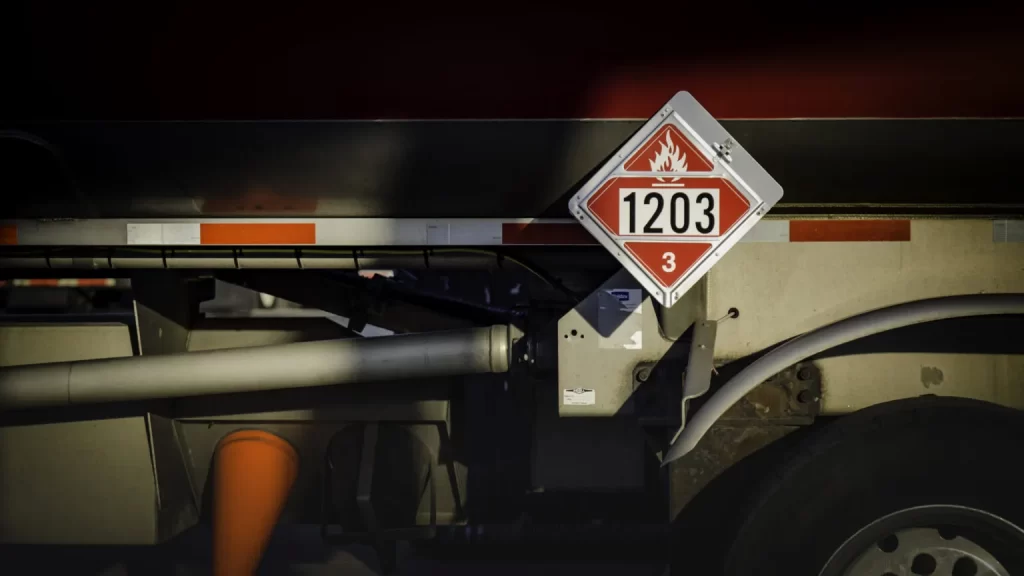October 21, 2021
Unannounced hazmat inspections reveal risks, unsafe practices

Carriers hauling hazardous materials and dangerous goods must ensure safety of drivers and the public
The results are in: Hazmat violations continue to be a problem.
The Commercial Vehicle Safety Alliance (CVSA) has released the findings of its unannounced-inspection initiative this summer, which cracked down on safety issues related to the transport of hazardous materials and dangerous goods (HM/DG) as part this year’s Road Blitz.
From June 21-25, commercial motor vehicle (CMV) inspectors in Canada, Mexico and the U.S. carried out 13,471 inspections of vehicles transporting HM/DGs. Of the 10,905 CMVs and 8,363 HM/DG packages inspected in the U.S. and Canada, 2,714 violations were reported.
Inspections were conducted on CMVs hauling HM/DGs and any vehicle found to have HM/DG-related out-of-service violations. Truckers in violation of those as well as other driver- or vehicle-related out-of-service violations were sidelined until the violations were addressed.
This summer’s Road Blitz found many containment issues. Totals included 628 nonbulk/small means of containment packaging violations; 277 nonbulk/small means of containment labeling violations; 288 loading and securement violations; and 50 HM/DG package integrity (leaking) violations.
Reliance Partners’ director of risk services, Mark Barlar, isn’t surprised by the violation numbers. “There’s a lot of little nuances that go into the hazardous material regulations that a lot of drivers are just not familiar with, which we at Reliance Partners want to help them understand,” he said.
“Hazmat [loads], as long as they’re properly packaged, are pretty safe to be transported depending on what they are,” Barlar said. “It’s when they are no longer contained inside of [their] package that it becomes a real problem.”
Some materials become extremely volatile when exposed to or in contact with other materials. For instance, Barlar noted that certain acids react violently with some metals.
Barlar attributes the problem to drivers not being fully aware of the requirements for hauling dangerous goods. Many do not realize that secondary securement methods are needed for hazardous cargo, unlike general freight; sometimes drivers don’t inspect the loads themselves because the trailer was sealed before dispatch. As a result, they misinterpret the nature of their cargo or perhaps are unaware of discrepancies between the shipping papers and the load itself.
Violations also arise from the misuse or lack of understanding of hazardous materials markings, labeling or placarding. CVSA recorded 390 bulk packaging/large means of containment placarding violations and 307 bulk/large means of containment placarding violations, in addition to 167 other safety marks violations this year.
It’s not uncommon for drivers to display the wrong placards, Barlar said, pointing out that signs and markings can look similar.
For example, both the flammable gas and flammable liquid labels are red diamonds marked with a white flame. Some placards may have “flammable gas” or “flammable liquid” scripted on the sign, but that’s not always the case. Barlar said to remember that flammable gas placards are marked by the number 2, flammable liquids by the number 3. The Federal Motor Carrier Safety Administration outlines hazardous materials labeling here.
In addition, placards or the trailer itself may be marked by a four-digit UN/NA number, which designates a certain hazardous chemical or group of hazardous chemicals. It’s important to have this number in addition to the correct placard. Barlar explained, “1203 is the number specifically for gasoline. But if you just had a class three [flammable liquid] placard on the vehicle, it isn’t telling you that it’s specifically gasoline, just a flammable liquid; 1203 it’s telling you what type of material it is.”
He noted that one of the first things inspectors look for is the placard and its identifiers. It’s crucial that drivers have the appropriate labels displayed not just to avoid a violation, but also to ensure that emergency responders know how to respond in the event of a tanker leak or spill.
Barlar knows a thing or two about hazardous materials inspections. His resume includes over 20 years as a DOT inspector in Wisconsin between Milawukee and Chicago. He served as a hazardous materials certified inspector as well as an instructor with FMCSA, teaching others how to carry out hazardous materials and cargo tank inspections.
In response to the Road Blitz’s 496 recorded shipping paper violations, Barlar urges the industry to diligently study both FMCSA and Pipeline and Hazardous Materials Safety Administration regulations.
Barlar instructs drivers, more specifically, to have the hazmat bills of lading and other shipping papers (filled out properly and checked for accuracy), along with a Hazardous Materials Emergency Response Guidebook on hand at all times and within the driver’s reach inside the cab. He suggests keeping these documents in the driver’s side door for ease of access.
“Training, training, training — you can never have too much of it,” Barlar stressed, recommending drivers participate in training more than just once every three years, the minimum requirement for hazmat employees.
Barlar encourages motor carriers to seek the counsel of hazmat experts, too. Having law enforcement officials or consultants like him expound on the dangers of transporting hazardous materials is a great way for fleets to refresh safety concepts and best practices.
“You can never become complacent, because if something goes wrong, it goes wrong really bad, really fast,” Barlar said, reminding drivers not to skimp on pre- and post-trip inspections. Be sure to do them well, he said, because it could save your life.
Carriers are required to notify the National Response Center (NRC) of hazardous materials incidents occurring at any point in transit, including loading, unloading and temporary storage, at the earliest practical moment but no later than 12 hours after the occurrence. Contact the NRC at 800-424-8802 for 24/7 assistance.